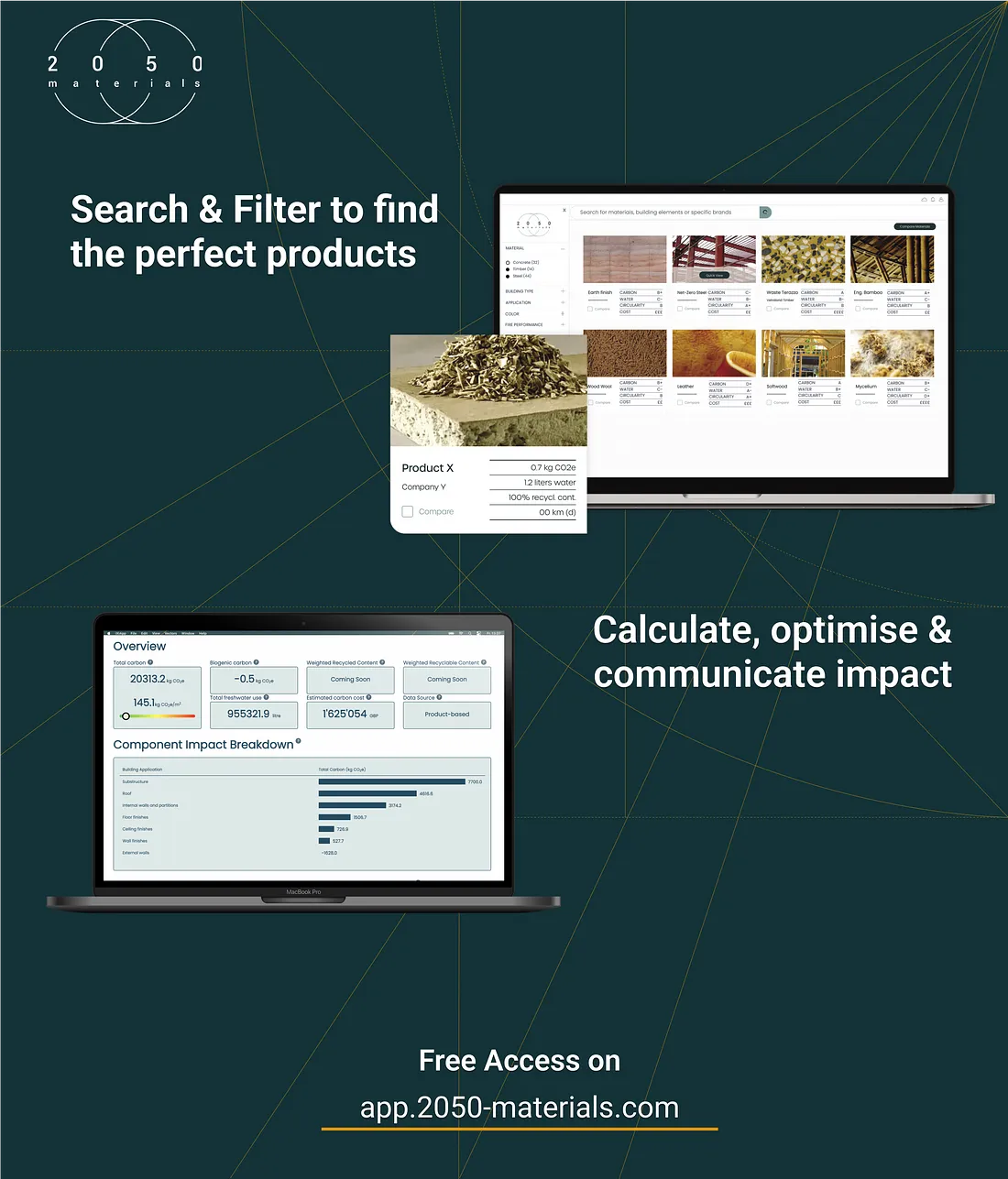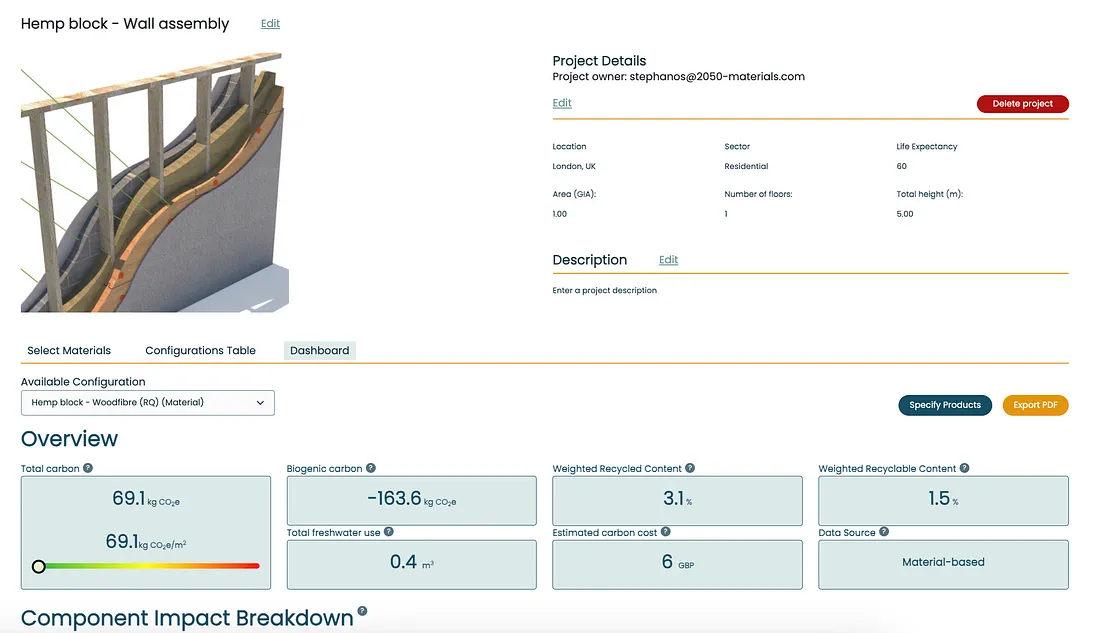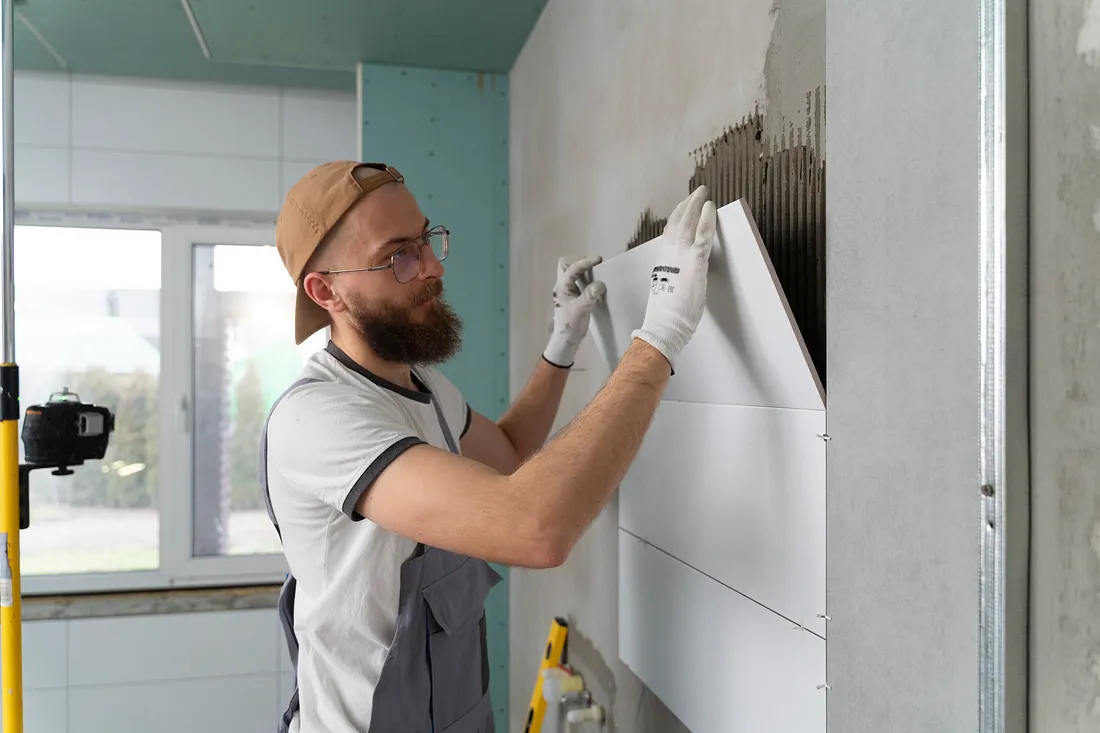2023 Sustainable Innovations in the Built Environment

Image from Freepik
This report is based on a publication by the UKGBC and outlines key solution trends observed by UKGBC throughout 2023, providing insights into their use and driving forces in the UK market.
The built environment includes various disciplines and sectors, with innovations emerging in buildings, construction sites, communities, think tanks, academia, acceleration programs, and corporations. The focus is on addressing climate and ecological crises and leveraging the built environment as a force for good.
Keeping up with sustainable innovation can be challenging, but the UKGBC continuously profiles impactful solutions and engages with both innovators and industry adopters to understand their impacts. Despite challenges for VCs and start-ups, 2023 saw significant activity. Here, we summarize notable sustainable solution trends from 2023, contextualizing their use and driving forces in the UK market.
Innovative solutions are not always new technologies or products. Alongside novel innovations, achieving UKGBC’s vision for a sustainable built environment requires the widespread and rapid implementation of market-ready solutions. Some solutions directly address specific challenges like 2050 Materials which opts to be a solution for the data gap in the construction industry while others create conditions for broader adoption of innovations. A systems-thinking approach is crucial for solution development and adoption. Implementing complementary innovations together can yield more significant outcomes than isolated implementation, and the wider system impacts should always be considered, especially in the complex built environment value chain.

2050 Materials platform illustration
Key trends in 2023
– Promoting and facilitating ESG outcomes
– Adaptation, resilience, and climate risk
– Nature and biodiversity
– Embodied carbon
– Waste and circularity
– Innovative building materials
– Offsetting carbon emissions
– Using renewable energy
– Retrofitting
– Optimisation, Operational Efficiency, and Smart Buildings
 Disclaimer: The UKGBC does not endorse any specific solutions in this report but aims to inspire built environment stakeholders. Due diligence is essential before adopting any solutions, and while this report highlights notable solutions, many others are also available.
Disclaimer: The UKGBC does not endorse any specific solutions in this report but aims to inspire built environment stakeholders. Due diligence is essential before adopting any solutions, and while this report highlights notable solutions, many others are also available.
Promoting and facilitating ESG outcomes
Organizations have significant power to drive change. Factors like purpose, governance, and financing structure influence their actions and impact on the wider system. As more organizations transition to net zero, they alter their planning, construction, maintenance, operation, occupation, and deconstruction of buildings, affecting broader economic and social systems. The social aspect of ESG is gaining traction, with organizations considering their impact on individuals, communities, and society.
Progressive organizations seek to leave a net positive impact on human and natural systems, requiring innovation in business models. The B-corp movement and novel governance structures like Riversimple’s Future Guardian Governance and Faith in Nature’s nature board exemplify this. However, ESG monitoring and reporting remain complex due to varied compliance standards and required resources. Emerging solutions like Company Tracker Pro, OnePlanet Digital, Deepki, Measurabl, EcoVadis, and World Wide Generation aim to simplify these processes.
For ESG project outcomes, effective collaboration and incentive alignment within complex value chains are crucial. Integrated Project Insurance, a new delivery model, replaces professional indemnity insurance with collective insurance for all project partners, fostering a “blame-free” culture. Progressive organizations also invest in their supply chains to scale sustainable materials and technologies, benefiting the entire sector.
Innovations in sustainable finance are also emerging. The Atelier Carbonlite Challenge links financing interest rates to building performance metrics like operational energy, embodied carbon, and water consumption. Sustainable finance issuance has grown, further incentivizing sustainable project outcomes.
Adaptation, resilience, and climate risk

Image from Freepik
Climate change’s physical risks and our ability to adapt and build resilience are growing concerns. UKGBC is developing a Climate Resilience Roadmap for the built environment, setting measurable indicators, metrics, and targets for climate resilience and identifying key actions and policies.
Risk assessment and insurance face challenges due to limited data for accurately measuring and anticipating climate risk. Interdependencies between risks, such as flooding after drought, complicate this further. Climate hazards often impact entire communities, necessitating a holistic and systems-thinking approach. Solutions like Greenpass help planners and developers understand climate-resilient urban design options.
Stakeholders often struggle to prioritize adaptation measures due to uncertainty about future physical hazards. Larger, financially robust organizations typically undertake detailed climate risk assessments. Emerging digital platforms like Climate X, Intensel, EarthScan, Waterplan, Raincoat, and Climanomics support climate risk understanding and evaluation. However, different tools can yield varied hazard risk profiles, emphasizing the need for transparency in data, assumptions, and climate scenarios. Construction sites are also vulnerable to extreme weather events, with solutions like EHAB providing granular weather risk analysis.
Novel insurance approaches offer both challenges and opportunities. Buildings may become increasingly uninsurable under continuing climate change scenarios, but innovative insurance products are emerging. Parametric insurance, for example, automatically pays out pre-agreed amounts when certain climate parameters are met. FloodFlash follows this model, lowering premiums by reducing uncertainty and costs and improving flood defense investments. Insurers have opportunities to address climate risks and incentivize positive actions by developing innovative products that offer cheaper premiums for policyholders implementing climate adaptation measures.
Adaptation pathways, used in projects like the Thames Estuary Adaptive Plan, explore multiple adaptation routes to avoid locking decision-makers into a single, potentially inappropriate path. The Adaptation Catalyst E-Tool helps users identify the best adaptation measures through incremental, integrated actions under uncertainty.
Flooding is a major hazard in the UK. Solutions include permeable “sponge cities,” nature-based solutions, and city flood management infrastructure. Direct solutions include smart air bricks, raised services, closed cell insulation, and flood doors. Industry is considering Flood Performance Certificates to indicate flood risk for homebuyers and tenants, motivating further solution development and deployment.
Overheating is another growing hazard in the UK. Solutions include low-e window films like MicroShade, Albotherm, and Filia, as well as traditional passive external shading solutions like louvres, brise soleil, and shutters.
Nature and biodiversity

Image from Freepik
Climate Tech is gaining traction, driven by increasing awareness of nature-related risks. The Taskforce on Nature-related Financial Disclosures (TNFD) assesses organizational impact and dependencies on nature, with mandatory reporting likely within the next five years. The UK’s National Planning Policy Framework and the 2021 Environment Act’s Biodiversity Net Gain (BNG) legislation are also influencing innovation. BNG mandates at least a 10% gain for most new developments requiring planning permission, effective January 2024 for large sites and April 2024 for small sites. Science-Based Targets for Nature is working on consistent monitoring metrics and indicators for nature and biodiversity.
Biodiversity net gain
Tools are emerging to help developers baseline, test, and monitor biodiversity impacts. These include Joe’s Blooms, AiDash, Gentian, Biodiversify, and Map Impact. Challenges remain around BNG upskilling and training, particularly for local planning authorities. Verna supports local authorities and developers with end-to-end BNG support, from planning application assessment to 30 years of monitoring and reporting.
Embodied ecological impacts
There are calls for Life Cycle Assessments to consider broader sustainability metrics like embodied ecological impacts. Greater supply chain transparency is needed to assess and locate these impacts, especially when they are not directly linked to an organization. Firstplanit offers sustainability metrics for materials beyond embodied carbon, considering factors like use-case and location.
Nature’s value
Quantifying the value of nature is challenging. UKGBC has worked on valuing urban nature-based solutions, and other organizations are exploring financial business cases for their implementation. Hoare Lea’s Biome tool assesses both monetary and non-monetary value created by nature. Financially valuing nature may unlock solutions like payback schemes for those benefiting from nature-based interventions but brings complexities due to the variety of co-benefits and stakeholders involved.
Demand for accessible nature spaces in urban areas is increasing, recognizing the value of human connection to nature in promoting positive actions and outcomes. Building local understanding and knowledge around nature is crucial, which cannot always be quantified. Engaging local communities in nature-enhancing initiatives creates longer-term value and promotes maintenance of implemented solutions. Tiny Forest engages local communities, schools, and businesses in planting, maintaining, and monitoring forests, fostering co-ownership.
Embodied carbon
The UK has no formal plans to introduce national embodied carbon limits for construction, unlike the EU. However, the National Planning Policy Framework consultation considered mandating Whole Life Carbon Assessments (WLCA) for planning purposes, and some Local Planning Authorities already strive for this. The London Plan requires development proposals to calculate and reduce WLC emissions, leading to some projects being challenged or rejected on whole life carbon grounds. The Leveling Up and Regeneration Act 2023 requires local authorities to create local design codes, potentially including embodied carbon information. Innovations are gaining traction in anticipation of more rigorous embodied carbon regulations.
Accurate and comparable measurement of embodied carbon is essential. Many calculation tools are widely used, including, Cercula, EC3, eTool, One Click LCA, and others. However, alignment and exchange of methodologies and datasets used by these tools are critical. Modeler capability significantly impacts WLCA results, but there is no formal verification process for practitioner competency. Construction Carbon provides a training and verification route for practitioners.
2050 Materials’ role in reliable data

Projects tool on 2050 Materials platform
Reliable input data, ideally product-specific Environmental Product Declarations (EPDs) and generic sector-level data, are needed for accurate WLCAs. This is where 2050 Materials comes into play with the suggestion to automate data through artificial intelligence (AI) to streamline some of these processes; reducing costs, improving reliability and increasing efficiency. 2050 Materials also enables early-stage building material comparison and selection to minimise and report on embodied carbon.
The below video offers an overview on the functionality of the 2050 Materials platform for designers and specifiers.


Waste and circularity
The built environment accounts for 50% of global resource extraction and 62% of UK waste from construction, demolition, and excavation in 2018. Transitioning to a circular economy is crucial to reducing waste and resource consumption. The UK’s Circular Economy Package sets the legislative framework, with local governments like London mandating Circular Economy Statements for large-scale developments since 2021.
Material reuse is gaining traction, reducing waste, virgin material extraction, and embodied carbon. Companies like Cleveland Steel and Tubes recover materials for construction, while digital platforms like HTS Stockmatcher and FerrousWheel match reused materials with building designs. Exchange platforms such as Material Reuse Portal and Enviromate facilitate wider adoption of material reuse.
Material passports, supported by platforms like Madaster and Circuland, enable easier reuse or recovery of materials. These platforms aggregate data from various sources, aiding future material recovery and reuse planning.


Recycling construction and demolition waste remains high, though often through downcycling. Solutions for hard-to-recycle materials, such as flat glass and plasterboard, are emerging from innovators like Xeroc. Digital tools like Qualis Flow help track and manage material choices across projects, promoting sustainable practices in the built environment.
Innovative building materials
The development of sustainable building materials continues to improve, although they still carry a 10% cost premium, according to an A/O PropTech report. The UK government is considering policies to incentivize their use, including the UK Carbon Border Adjustment Mechanism, which aims to apply a carbon price on high-emission industrial goods like cement, aluminum, and glass to level the playing field.
Concrete
Concrete, responsible for about 8% of global emissions, remains a focus for decarbonization. Innovations include using alternative aggregates from mixed construction waste, unrecyclable plastic waste, and manufactured limestone treated with carbon dioxide. Companies like Sublime Systems and Geoprime are developing novel solutions to reduce cement’s carbon intensity, while others like Earth Friendly Concrete and BioZeroc aim to eliminate cement entirely. CQuestr8 focuses on long-term CO2 storage in concrete blocks. Optimizing concrete use is also crucial, with technologies like Hyperion Robotics’ 3D printing software and Structure Pal’s AI for eliminating over-design.
Bricks
Innovative bricks like Kenoteq’s K-Briq, made from over 90% recycled construction waste without high-temperature firing, are emerging. Other solutions include bricks tailored from local waste and those made from recycled plastic.
Bio-based materials
Bio-based materials, such as hemp, mycelium, meadow grass, and algae-based products, are gaining traction. Hemp is particularly notable, with companies like IndiNature and Adaptavate’s hemp-based ‘breathaboard’, a plasterboard substitute Bio-based materials are also used in innovative construction systems, though insurance challenges persist, especially for timber.
Construction systems
Innovations in construction systems include high-performing external walls, reusable internal partitions, and offsite modular solutions. Despite challenges, the benefits of modern methods of construction (MMC) are evident, with examples like modular housing in Cardiff.
Scaling-Up innovative materials
Scaling up production of innovative materials is challenging due to high upfront costs and large material quantities. Licensing existing supply chains and creating new ones are potential solutions. Collaborative approaches, industry awareness, and transparency around sustainability credentials can also help. Platforms 2050 Materials provide resources for material selection.
Carbon offsetting
To achieve net zero, reducing emissions in line with 1.5°C targets is essential. Carbon offsetting has faced criticism, but innovation continues. UKGBC’s updated Carbon Offsetting and Pricing Guidance encourages responsible offsetting and internal carbon pricing. Transition funds and local projects, like those supporting regenerative agriculture and retrofit projects, are gaining interest.
Renewable energy
Renewable energy, energy storage, and electrification are critical for net zero, but they come with sustainability challenges. Innovations in grid decarbonization, flexible buildings, and renewable energy procurement are growing. Solutions include solar roofs, facade integrated photovoltaics, and mechanical facades. Energy storage innovations, such as sand batteries and phase change material thermal storage, address intermittent renewable challenges.
Transitioning from gas to electric heating, particularly heat pumps, is vital. Innovations include more efficient heat pumps, communal networks of ground source heat pumps, and hybrid systems. Models like Heat as a Service and Zero Bills are incentivizing lower carbon heating.
Retrofit

Image from Freepik
Reducing energy consumption in existing buildings is crucial for net zero. Venture capital investment in retrofit companies is growing. Digital solutions offer “one-stop-shop” models for home and commercial retrofit, while physical innovations in insulation and smart technologies are also advancing. Regulations like the proposed Scottish minimum energy efficiency standard present opportunities for further innovation.
Minimizing operational energy use in buildings requires innovation in data collection, analysis, and autonomous optimization. Solutions include smart devices, building operating systems, and autonomous control technologies. Water efficiency is also critical, with digital platforms and physical solutions reducing consumption. Tenant engagement and behavior change remain essential for achieving net zero.
When it comes to selecting the best retrofit measures, the process can be complex due to varying needs and motivations. However, there’s a growing trend of companies offering “one-stop-shop” models that simplify the process for building owners. These models help set priorities, explore options, and sometimes connect with installers. For home retrofits, examples include Furbnow, Propflo, Snugg and more. For commercial buildings, notable companies are CarbonShift, Mortar IO, and others. Solutions like Kestrix and QEA Tech use heat mapping and analysis to identify retrofit priorities, while Satellite Vu employs thermal imaging from space to pinpoint the most energy-inefficient buildings and cities.
Optimisation, operational Efficiency, and smart buildings
To achieve sustainable buildings, reducing both upfront resource consumption and operational energy use is essential. Established methods like ensuring low u-value and high airtightness are crucial, but further innovation is driven by standards like the Passivhaus Standard and the upcoming UK Net Zero Carbon Building Standard.
Digital optimization methods significantly reduce energy consumption by making buildings “smarter.” This involves collecting and analyzing data through IoT devices and sensors, with companies like MeterZ and Rhino Energy leading the way. Building Operating Systems enhance data integration, while solutions like Demand Logic and Infogrid provide user-friendly dashboards for efficiency improvements and predictive maintenance.
Autonomous optimization, offered by companies like BrainBox AI and Optimise AI, further reduces energy and carbon usage, particularly in HVAC systems. Air quality solutions include Urecsys, Airthings, and pollutant-absorbing paints and cloths.
Water efficiency solutions such as WINT monitor usage and detect leaks. Physical solutions like the Encore Cistern and Aguardio’s sensors help reduce consumption.
Despite technological advancements, human training and behavior change are crucial. UKGBC’s Operational Buildings Optimisation Learning Labs and platforms like Hello Energy and CUBE Competition encourage tenant engagement and collaboration to achieve net zero goals.
Conclusion
Despite economic challenges, innovation in the built environment remains strong. Key themes include understanding supply chains, leveraging AI, working with natural systems, improving data quality, and fostering collaboration. 2050 Materials remains an important solution for addressing the data gap in the build environment, sign up to the platform for free and start your journey to reaching near-zero environment.
Reach out to us on info@2050-materials.com for more information.
Sources
Trends in Sustainable Solutions in the Built Environment 2023 — UKGBC
With Funding Down 42%, Proptech Startups Struggle To Hang On — BISNOW
Why the built environment B Corp movement is buzzing — Architects’ Journal
Future Guardian Governance — Riversimple
UK to enshrine mandatory climate disclosures for largest companies in law — Gov.UK
Sponge Cities: What is it all about? — World Future Counsil
Understanding overheating — where to start — NHBC
Whole Life-Cycle Carbon Assessments guidance – London.gov
Government rejects Foster + Partners’ “highly unsustainable” Tulip tower — Dezeen
Towards a sustainable global construction and buildings value chain — SEI
Changing construction’s throwaway culture — RICS
Making Concrete Change Innovation in Low-carbon Cement and Concrete — Chatham House Report
How a sand battery could transform clean energy — BBC
What is Passivhaus? — Passivhaus Trust
Why we should all be saving water — Energy Saving Trust
Related articles

Climate-Resilient Materials for the Built Environment: A Data-Centred Prime
As climate volatility intensifies, resilience metrics are fast becoming as critical as carbon data in material selection. This article outlines why adaptation is now a design imperative, how materials can be evaluated through a systems lens, and what KPIs project teams should demand. From self-healing concrete to fire-rated façades, we present a structured taxonomy of resilient materials, explain how to embed this intelligence into digital design workflows, and propose next steps for specification, benchmarking, and procurement.
Read more
The Most Interesting Low Carbon Products in Office Design
In this article and collection, we highlight 11 outstanding products that contribute to a lower carbon footprint in office design.
Read more
Top Low Carbon Building Boards: Performance, Benefits, and Use Cases
The building boards highlighted in this article and collection showcase low-carbon innovation in modern construction.
Read more